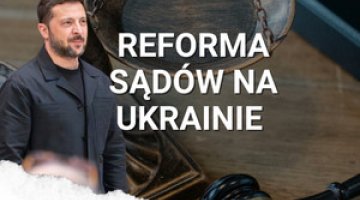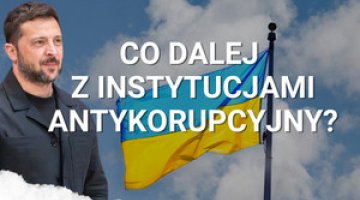The Ecumenical Patriarchate recognises the independence of the Orthodox metropolis of Kiev
On 11 October, a synod of the bishops of the Orthodox Church’s patriarchate of Constantinople (Ecumenical) confirmed the canonicity of the Ukrainian Orthodox Church, denied Moscow’s sovereignty over Kiev, and finally confirmed that in the near future Ukrainian Orthodoxy would obtain autocephaly (complete independence). The clergy felt that in the seventeenth century the patriarchs of Moscow had illegally annexed the Orthodox metropolis of Kyiv to the area of their jurisdiction (the canonical territory). This means that in the light of canon law, it had remained within the jurisdiction of Constantinople without interruption. The Synod also revoked the anathemas (the penalty of exclusion from the Church) levelled against the heads of the Kiev Patriarchate of the Ukrainian Orthodox Church (KP UOC) and the Ukrainian Autocephalous Orthodox Church (UAOC), and by confirming the canonical nature of these two communities, also confirmed the validity of the sacraments celebrated in them.
It was also announced that the procedure for granting tomos (assigning the Ukrainian Orthodox Church autocephaly) will continue. At the same time, the synod decided that autocephaly may be granted only to the united metropolis of Kiev, and not to the several parallel Orthodox structures on the same territory. This means that the grant of the tomos will be postponed until the spring of 2019 or even later.
Commentary
- The recognition of the canonical legitimacy of the two church structures (the KP UOC and the UAOC), which had hitherto been regarded as schismatic, may be assumed to be just a temporary step, aimed at facilitating the reunification of the Ukrainian Orthodox Church into a single organisation. One direct consequence of the resolutions by the synod of the Patriarchate of Constantinople will be the convention of a council (synod) of Ukrainian Orthodox bishops. This will bring together the bishops of the KP UOC, the UAOC, and those bishops of the Ukrainian Orthodox Church (UOC) who recognise the sovereignty of the patriarch of Moscow while acknowledging the illegality of this sovereignty. It is not known how many of them will attend; the unification petition issued this spring to the Ecumenical Patriarch Bartholomew was probably signed by 10 of the c. 90 bishops of the UPC, but their number is likely to increase.
- We may expect the council of Ukrainian unification to be convened within a few weeks or a few months, at the latest during the Christmas holidays (as celebrated according to the Eastern rite). Its task will be to determine the name of the new Church (this name will probably not duplicate the names of any of the other structures), to regulate the functioning of the overlapping structures of the church (especially the dioceses), and finally to elect a new superior, who will almost certainly bear the title of patriarch. After the new Church has been constituted, the ecumenical patriarch will be able to issue the tomos, and the new church will be able to gain full recognition from the global Orthodox community.
- The repeal of the anathema imposed on the self-proclaimed Patriarch Filaret of Kyiv seems a natural consequence of the refusal to recognise the sovereignty of Moscow over Kyiv; this may attest to the fact that the synod accepts him as the superior of the united Church of Ukraine. However, it is not obvious that he will be chosen, either because of his age (he was born in 1929), or the controversies associated with his person.
- The process of unification initiated by the council may abound in numerous local conflicts. There is no doubt that some of the bishops, priests and faithful of the UOC wish to remain within the jurisdiction of Moscow. Who those will be currently remains an open question (some of them will act against the council or put it under pressure, for example by organising street protests), but this will certainly lead to a weakening of both the Ukrainian Orthodox Church’s Moscow Patriarchate and the Russian Orthodox Church as a whole, for whom the Ukrainian parishes are an important source of both income and worshippers. Conflicts, mainly related to the rights of the use of sacred buildings, will be sharper in places where secular organisations with nationalist profiles (Ukrainian or Russian) get involved, as well as in places where the respective Church’s side is taken by state and/or local governments. In Ukraine religious buildings (apart from those built after 1991) are still owned by the state, which assigns them for use by ‘religious communities’ (parishes, monasteries, curiae etc., but not to churches as legal persons). It cannot be ruled out that conflicts over the right to use sacred buildings will either arise spontaneously or be initiated by Russia. The Kremlin will hope that Ukraine appears unstable as a state, and that the authorities in Kiev will be unable to control social processes in the country.
- The greatest risk of conflicts is associated with two lavras (monasteries of special spiritual rank), Pochayiv and Kyiv-Pechersk, whose superiors have adopted unequivocally pro-Moscow positions. Any attempt by the new united church to take over the latter, which is located in the centre of Kyiv, could become a conflict fraught with consequences, unfolding before the eyes of the world, thus giving Moscow the possibility of conducting an active propaganda campaign against Ukraine.
- From the political point of view, the decision of the synod and the expected grant of the tomos represents a success for President Petro Poroshenko, who since the spring of this year has actively lobbied for this move, also meeting with Patriarch Bartholomew of Constantinople. This improves his chances in the presidential election which will take place on 31 March next year. It will be a step which none of his competitors from the broadly understood ‘national’ (patriotic) camp will be able to criticise, in particular Poroshenko’s current chief rival Yulia Tymoshenko. For this reason, we may expect the president’s team to put pressure on the unification council to take place as soon and as quickly as possible, so that the tomos can be granted before the elections. Moreover, the conflicts around the unification the Ukrainian Orthodoxy will suit Poroshenko because they will promote the consolidation of pro-Russian electorate, probably around Yuri Boyko, leader of the Opposition Bloc, thus reducing support for the other candidates in this camp. In this way Boyko could reach the second round of the election, which would hand Poroshenko an easy victory if he is the other candidate.
- It can be assumed that the Moscow Patriarchate will first attempt to thwart or break up the Council of the Ukrainian Church, and later, after the tomos has been granted, will make good on its announcement and transform the current suspension of the ecclesial community of the Ecumenical Patriarchate into a definitive rupture. This will mean a split in the Orthodox Church, which will face individual Orthodox Churches with the need to choose between Constantinople or Moscow. Some of them may try to maintain contact with both capitals (which Moscow will oppose), while others may split.





